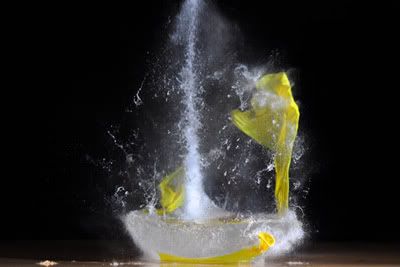Exposing for bright subjects.
To repeat myself, as I did when I discussed the "sunny 16" rule, this is not intended for the seasoned shooter but rather for the newcomers to photography that want to understand how the exposure meter in their cameras work. In that post, a few weeks ago, I said that you can set your expensive camera to AUTO and matrix metering and make, that expensive camera, a glorious point and shoot one.
All exposure meters, regardless of price, are designed to read the light from a scene and average that light to reproduce the subject as a middle tonality. What I am saying is that a reflective light exposure meter, like the one you have in your camera, will assign a middle tonality to the subject it is pointed at.
It is obvious that if your subject is of middle tonality all you have to do is to follow the meter but if it is not, then you have to add compensation if the subject is bright and subtract it if the subject is dark. If you follow the meter for those subjects you will end up with middle tones or to be specific, overexposure for dark subjects and underexposure for bright ones.
You have 3 different meters in your camera. Matrix is the most sophisticated and to me, the least reliable. I say that because we know that matrix automatically compensates the exposure but nobody knows by how much.
You could like the results but the opposite could also be true. You, as a photographer, are not in control.
I was educated using hand held exposure meters many years ago. Then we had center weighted metering and finally spot, the most precise meter for the seasoned photographer although it requires care to yield excellent results and that comes with experience.

This is a picture of a white heron photographed with my D2H and the 70-300 VR lens. In the early morning light, using manual mode, I selected spot metering and metered from the bright feathers. To bring back that brightness I opened up 1-1/3 stop and in Photoshop I made a slight adjustment level to place the bright areas close to the last vertical line on the right side of the histogram without clipping.
If I had used slide film then I would have added 1-1/2 stop of exposure compensation, sometimes 2 stops, to get details in the feathers. When I talked about the "sunny 16" rule I showed how to expose bright subjects properly using that rule.
Center weighted measures 75% of the sensitivity in the center but bright or dark tonalities outside the center can fool the meter.
Once you develop the good habit of learning to accurately expose your subject you should see a great improvement in your photography.
William Rodriguez




No comments:
Post a Comment